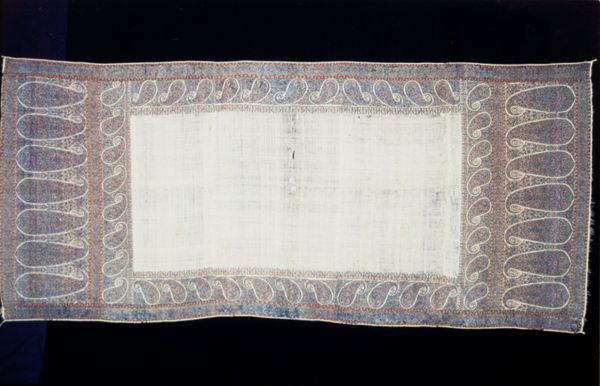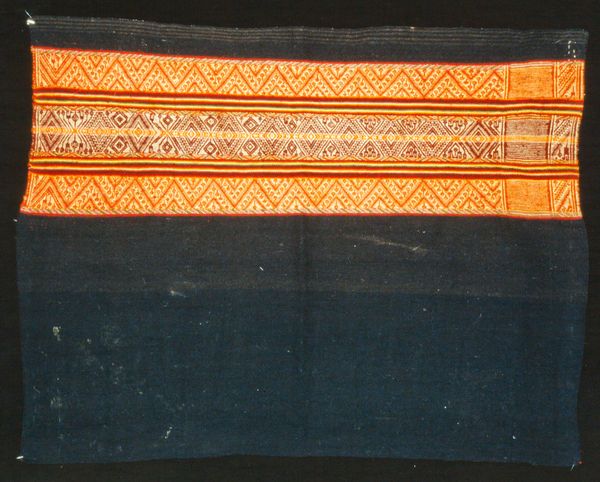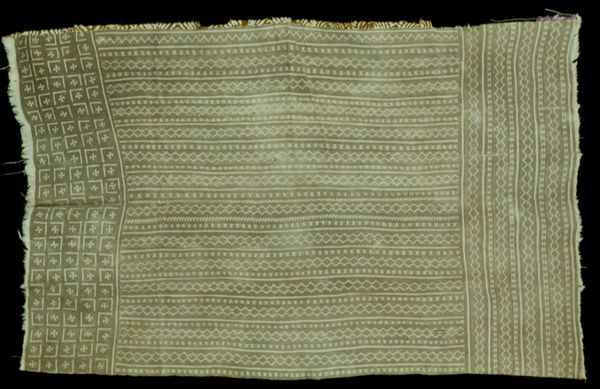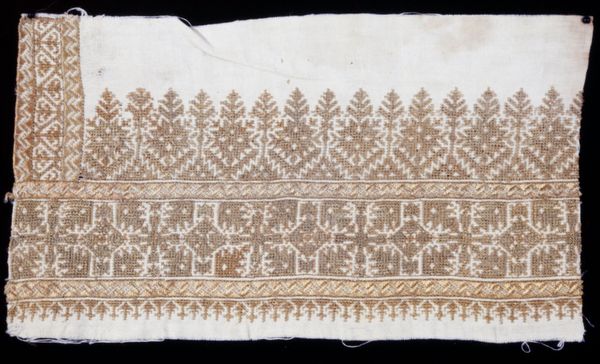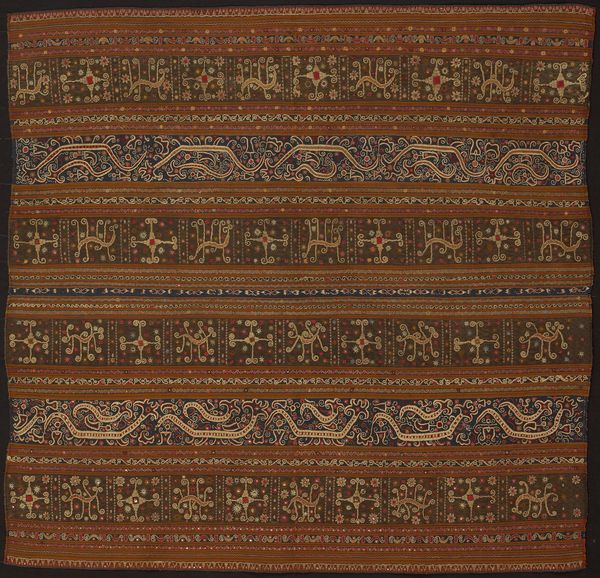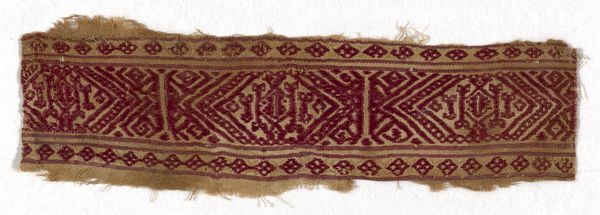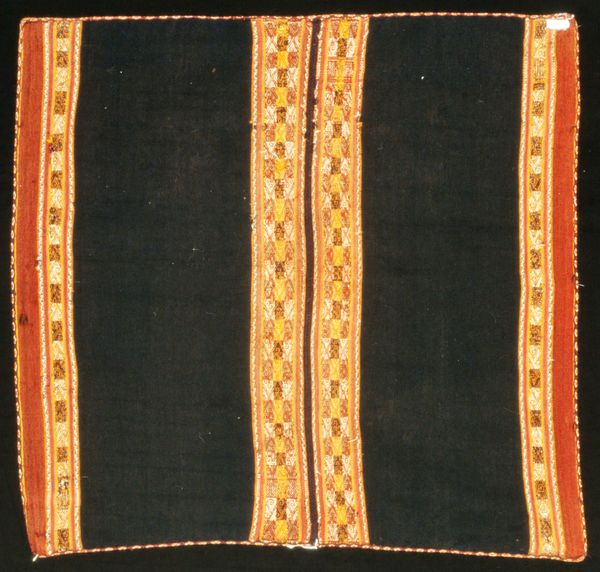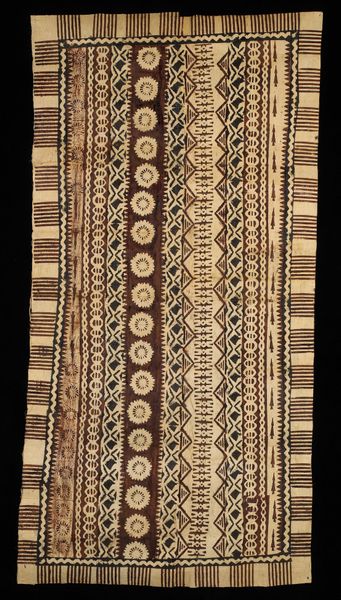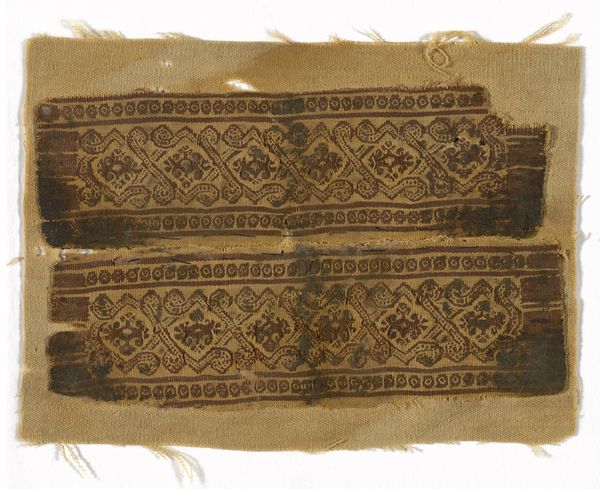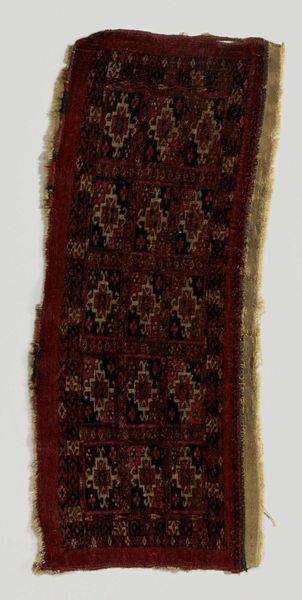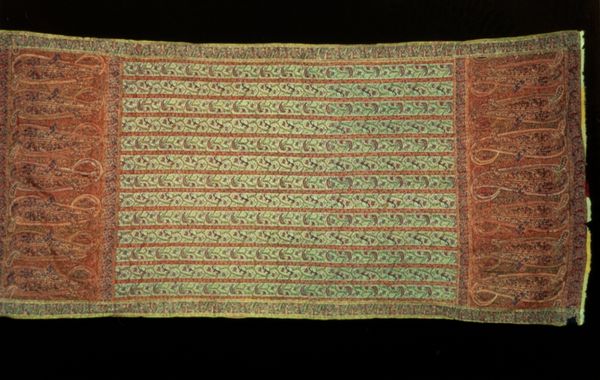
fibre-art, weaving, textile
#
fibre-art
#
weaving
#
textile
#
geometric
#
indigenous-americas
Dimensions: 85.7 × 18.1 cm (33 3/4 × 7 1/8 in.)
Copyright: Public Domain
This woven fragment was made by the Chimú people of ancient Peru. Notice the band's geometric and zoomorphic patterns. The repeated motifs, like stylized birds and stepped frets, speak to a deep connection with the natural world and the cosmos. The serpent, rendered here as a double-headed figure with spiraling tendrils, appears throughout ancient cultures, from Mesopotamia to Mesoamerica. The serpent is a potent symbol of life, death, and rebirth. In ancient Greece, we find it twined around the staff of Asclepius, a symbol of healing. Yet, in other cultures, it represents chaos and destruction. These variations reveal how symbols are not static; they evolve, accumulating new layers of meaning as they travel through time. Consider, too, the psychological impact of such imagery. The serpent evokes primal fears and desires, engaging viewers on a subconscious level. It represents a powerful force, reflecting the complex interplay between cultural memory and individual experience. The image is a mirror reflecting both our deepest anxieties and hopes. It is in this cyclical recurrence that the true power of symbols lies.
Comments
No comments
Be the first to comment and join the conversation on the ultimate creative platform.

